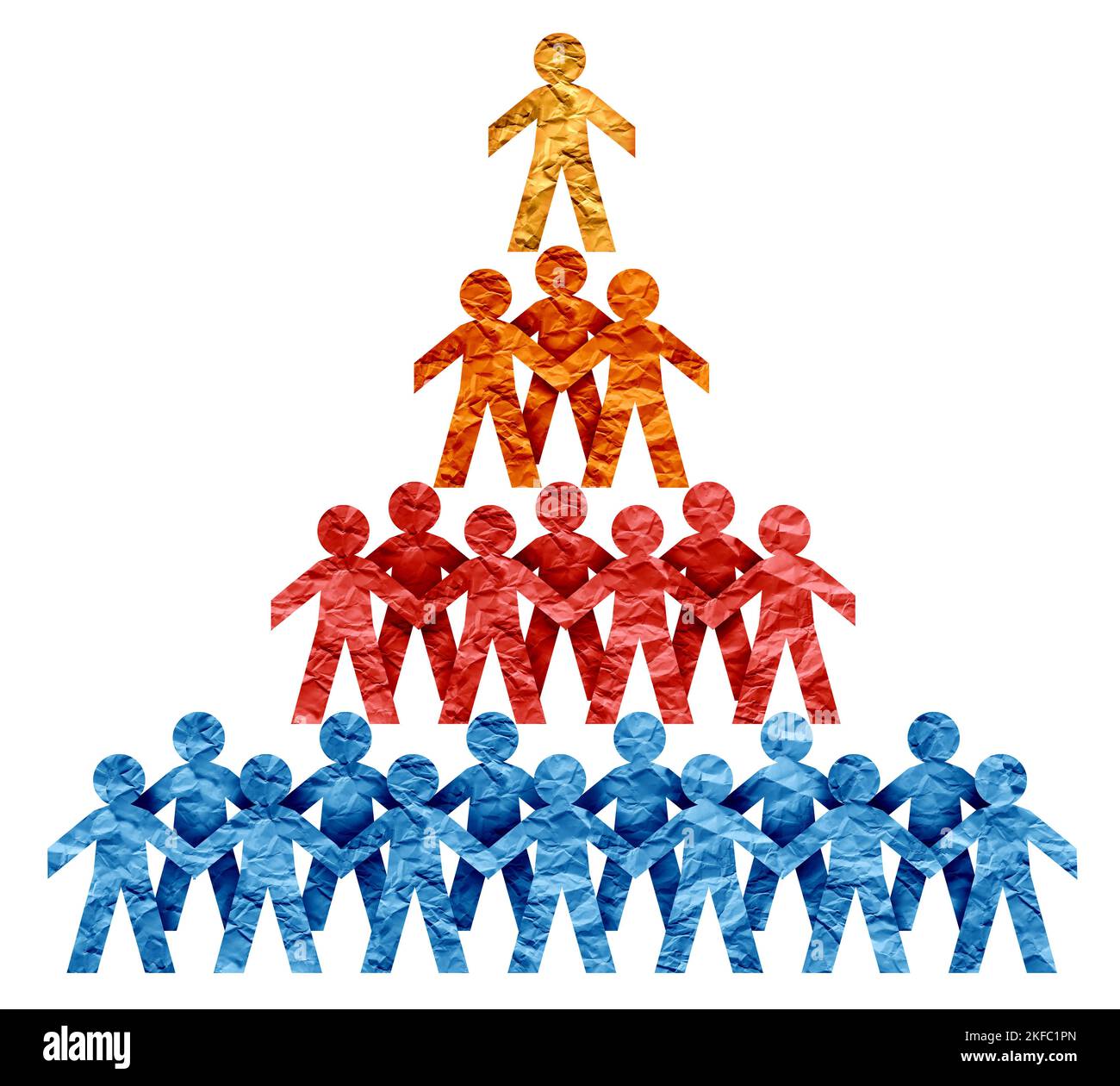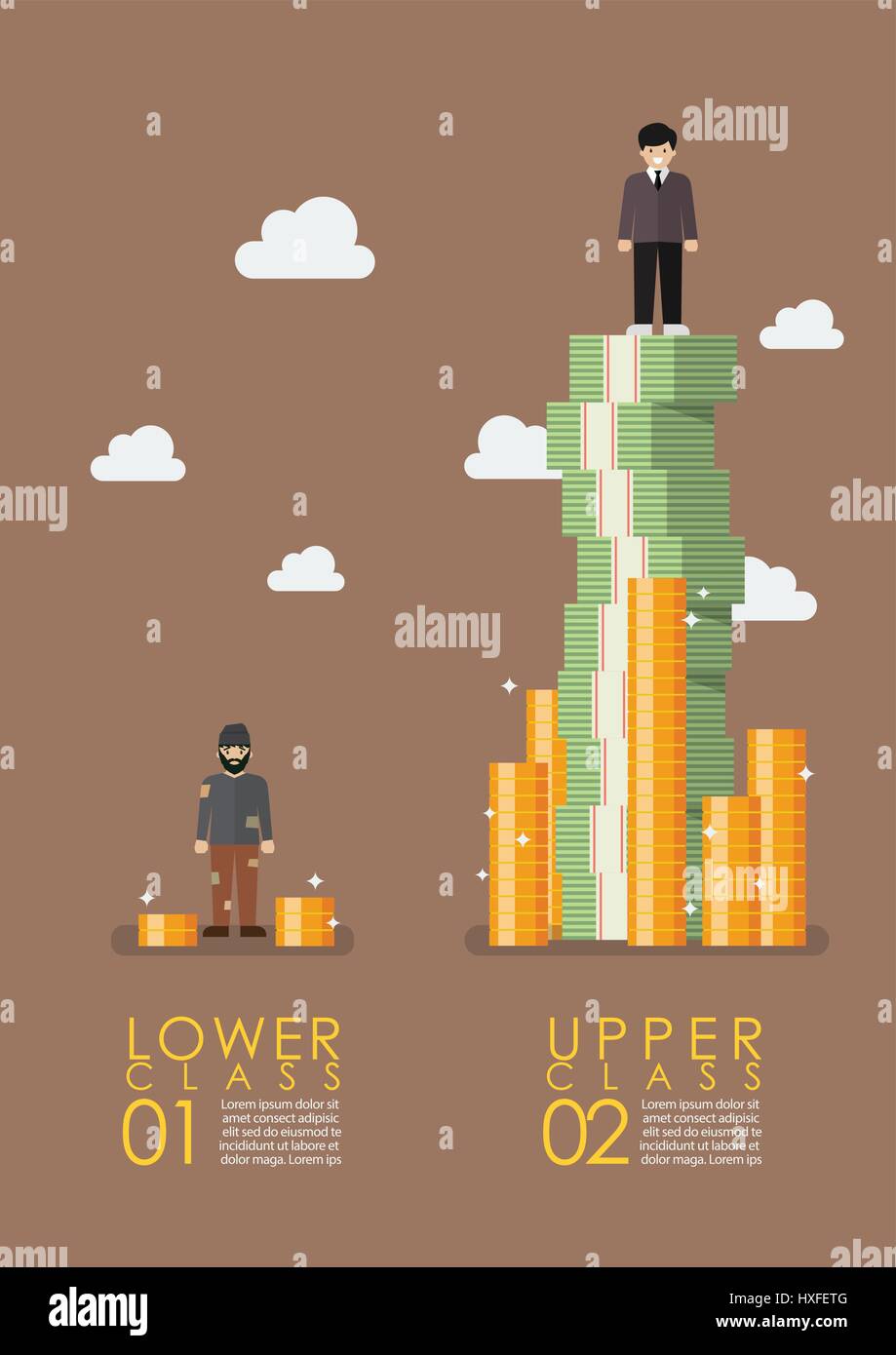Have you ever noticed the stark contrasts between the lives of people in your community, your city, or even your own family? Why do some individuals seem to effortlessly climb the ladder of success while others struggle just to stay afloat? This stark reality, this seemingly inherent hierarchy, is the essence of what we call social stratification.

Image: www.alamy.com
Social stratification, a fundamental concept in sociology, refers to the hierarchical arrangement of individuals or groups in a society based on factors like wealth, power, prestige, and social status. It’s a system that divides people into distinct layers, each with varying levels of privileges and opportunities. Understanding this complex social phenomenon is vital because it shapes our lives, influences our experiences, and ultimately defines the very fabric of our society.
The Building Blocks of Social Stratification: Understanding the Core Concepts
1. Social Class: The Economic Divide
The most prominent aspect of social stratification is social class, often defined by a person’s economic standing. This encompasses factors like income, wealth (assets), occupation, and education. Traditionally, we think of a class system as a pyramid, with a small elite at the top controlling vast resources and a vast majority at the bottom struggling to make ends meet. While this might seem like a rigid structure, the boundaries between classes are fluid and can shift over time.
2. Power: The Ability to Influence
Beyond economic resources, power plays a crucial role in shaping social stratification. Power refers to the ability to influence others, even against their will. Individuals or groups with power often wield significant control over institutions and can shape policies that benefit their interests. This power dynamic can influence access to opportunities, resources, and even the very laws that govern society.

Image: www.alamy.com
3. Prestige: Social Recognition and Esteem
Prestige, often intertwined with social status, refers to the level of respect and admiration given to individuals or groups based on their perceived social worth or accomplishments. Certain occupations, professions, or even family lineage can carry significant prestige within a society. This social capital can open doors to privilege and influence, creating a cycle of advantages for those who hold it.
The Roots of Social Stratification: A Historical Perspective
Social stratification is not a new phenomenon. It’s been a defining characteristic of human societies since the dawn of civilization. Here’s a glimpse into how stratification has evolved over time:
1. Early Societies: Ascribed Status and Birthright
In early agrarian societies, social stratification often rested on ascribed status, meaning your place in society was determined by factors you were born into, such as your family lineage, ethnicity, or caste. For example, in ancient Egypt, the pharaoh and his royal family held absolute power, while peasants toiled the land, their social standing predetermined by birth. This rigid system perpetuated inequality and limited social mobility.
2. The Rise of Feudalism: A System of Lords and Serfs
The feudal system of medieval Europe further embedded social stratification. Lords, who controlled vast tracts of land, held power over their serfs, who were obligated to work the land in exchange for protection. This hierarchical system not only defined social roles but also established a strict power dynamic that dictated the lives of individuals based on their birth.
3. The Industrial Revolution: The Emergence of Social Classes
The Industrial Revolution ushered in a new era of social stratification based primarily on wealth and occupation. The rise of factories and mass production created a class of wealthy industrialists who owned the means of production while a large working class filled the ranks of laborers. This shift away from land ownership to industrial capital transformed the very fabric of society, giving rise to new social classes with varying levels of power and mobility.
The Impact of Social Stratification: A Look at Real-World Examples
Social stratification, with its inherent inequalities, has far-reaching consequences for individuals and societies at large.
1. Unequal Access to Resources and Opportunities
Individuals born into lower social classes often face significant hurdles in accessing resources and opportunities that are more readily available to those in higher strata. This disparity can manifest in countless ways, from unequal access to quality education and healthcare to limited access to financial resources and job opportunities. The result can perpetuate cycles of poverty and limit the potential of individuals from lower socioeconomic backgrounds.
2. Social Mobility: The Ability to Climb the Ladder
Social mobility, the ability to move between social strata, can vary significantly depending on the society and its systems of stratification. In some societies, upward mobility is relatively attainable through hard work and education, while in others, structural inequalities can make it virtually impossible for individuals to break free from their predetermined social standing.
3. Social Conflict and Inequality
The stark inequalities inherent in social stratification often lead to tensions and conflicts between different social groups. When individuals feel that they are being denied access to basic resources or opportunities, they may feel resentful or even alienated from the dominant social structures. This can manifest in various forms of social unrest, protests, and even violent conflicts.
A Modern Perspective on Social Stratification: Recognizing the Complexity
In today’s world, social stratification is a complex and multifaceted phenomenon with both traditional and emerging influences. The rise of global capitalism, advancements in technology, and increasing cultural diversity have all shaped modern social structures.
1. The Role of Education and Human Capital
Education has become a powerful driver of social mobility in modern societies. Individuals with higher levels of education often have greater access to better-paying jobs, higher social status, and increased opportunities for advancement. While education can be a tool for upward mobility, it’s important to recognize that access to quality education is often unevenly distributed and can be influenced by socioeconomic factors.
2. The Impact of Technology and Globalization
The digital age has brought about both opportunities and challenges for social stratification. Technology has created new industries and jobs, but it has also led to automation and job displacement. Globalization has led to the flow of goods and ideas across borders, but it has also contributed to income inequality and the rise of transnational corporations with significant power and influence over global economies.
3. The Intersectionality of Identity and Social Stratification
Social stratification is not a one-dimensional concept. It’s interconnected with other aspects of identity, such as race, gender, ethnicity, sexual orientation, and religion. These factors often intersect to create complex systems of privilege and disadvantage that shape individual experiences and opportunities. For example, women, people of color, and LGBTQ+ individuals often face additional challenges and barriers within systems of social stratification.
Addressing Inequality: Towards a More Just and Equitable Society
Recognizing the challenges posed by social stratification is only the first step. Creating a more just and equitable society requires proactive efforts to address the root causes of inequality and create opportunities for all.
1. Investing in Education and Equal Opportunities
Providing quality education to all individuals, regardless of background, is essential for breaking cycles of poverty and creating a more equitable society. This includes ensuring access to early childhood education, investing in public schools, and providing affordable higher education options. Furthermore, promoting policies that foster equal opportunities in areas like housing, healthcare, and employment is crucial for leveling the playing field.
2. Embracing Social Welfare Programs and Safety Nets
Social welfare programs, such as unemployment benefits, food assistance, and affordable housing programs, provide a crucial safety net for vulnerable individuals and families. These programs can help mitigate the worst effects of poverty and inequality, but it’s vital to ensure that they are robust and accessible to all who need them.
3. Fostering Dialogue and Addressing Root Causes
Addressing social stratification requires open and honest dialogue about the challenges of inequality, systemic biases, and the historical roots of societal divisions. It’s essential to engage with individuals from different backgrounds and perspectives to gain a deeper understanding of the complex factors that contribute to social stratification. This dialogue can help identify actionable steps towards building a more just and equitable society.
Social Stratification.
Conclusion: Embracing Change and Building a More Equitable Future
The layers of social stratification are woven deeply into the fabric of our society, shaping our experiences, opportunities, and even our perceptions of the world. Recognizing the inherent inequalities and the far-reaching consequences of this system is crucial for building a more just and equitable future. By fostering dialogue, investing in education and opportunity, and embracing social welfare programs, we can work towards a society where everyone has the chance to thrive, regardless of their background or circumstances. It’s a journey that requires sustained effort, collective action, and a genuine commitment to creating a world where everyone has the opportunity to reach their full potential.





